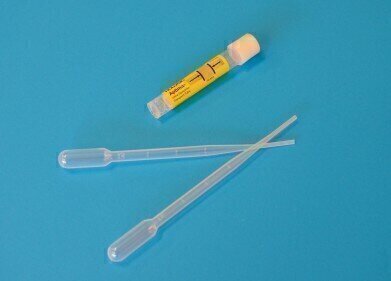-
 Nanosensors could help to define the antibody binding strength of drugs
Nanosensors could help to define the antibody binding strength of drugs
Electrophoretic Separations
MIT Nanosensors could benefit pharmaceutical companies
Aug 19 2013
Pharmaceutical companies could benefit from the unique properties that chemical engineers have found nanoscale sensors possess. The engineers from the Massachusetts Institute of Technology (MIT) have found that the nanoscale sensors could help to produce drugs in a more efficient manner and improve their safety.
The researchers were able to use the sensors to define the binding strength that different antibody drugs possess. Many of these drugs are being developed for the treatment of cancer and other diseases. The sensors were also able to be used to monitor antibody molecules and their structures. This monitoring included the chain of sugars within the molecules, which can interfere with their proper function.
Further research also showed that the nanosensors can be used to identify the most productive cells within a group of drug-producing cells that have been genetically engineered, according to Michael Strano, professor of chemical engineering at MIT. Professor Strano continued to say that these findings could help pharmaceutical companies to determine with formulations of a drug function better, which could help to improve the drug's effectiveness.
The research covered uniform arrays of nanosensors, as opposed to carbon nanotubes, and so revealed different results. It was found that uniform arrays are able to measure how binding strength is distributed through antibodies and other complex proteins. Understanding this distribution can help to develop drugs that are better able to stimulate the body's immune system in order to fight a disease more successfully.
Current techniques used to test how strongly an antibody can bind to its target are expensive and can take a long time, but this testing is necessary to ensure the effectiveness of the drug is not affected. The development of the sensor could make the overall process much faster and more precise. Ultimately this could lead to a more consistent production and better results.
The sensor is also able to detect low-level or weak binding, which can affect the function of the drug. If companies are able to detect this, they will be able to fine tune the manufacturing process and ensure continued high quality.
Digital Edition
Chromatography Today - Buyers' Guide 2022
October 2023
In This Edition Modern & Practical Applications - Accelerating ADC Development with Mass Spectrometry - Implementing High-Resolution Ion Mobility into Peptide Mapping Workflows Chromatogr...
View all digital editions
Events
ACS National Meeting - Fall 2024
Aug 18 2024 Denver, CO, USA
Sep 04 2024 Chiba, Tokyo, Japan
Sep 04 2024 University of Warwick, Coventry, UK
Sep 10 2024 Rockville, MD, USA
Plastics Recycling World Expo Europe
Sep 11 2024 Brussels, Belgium













